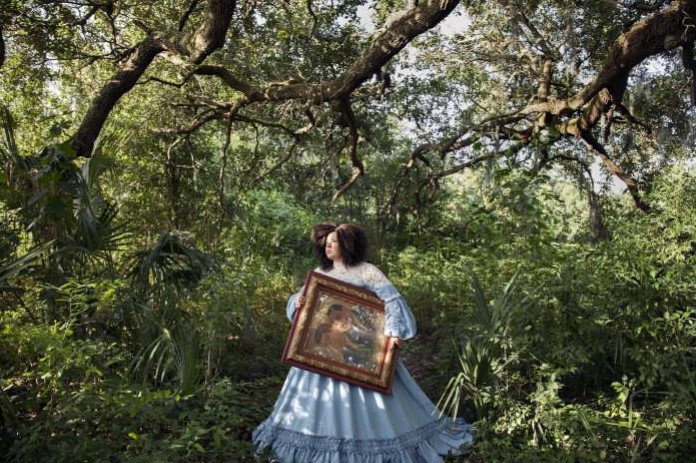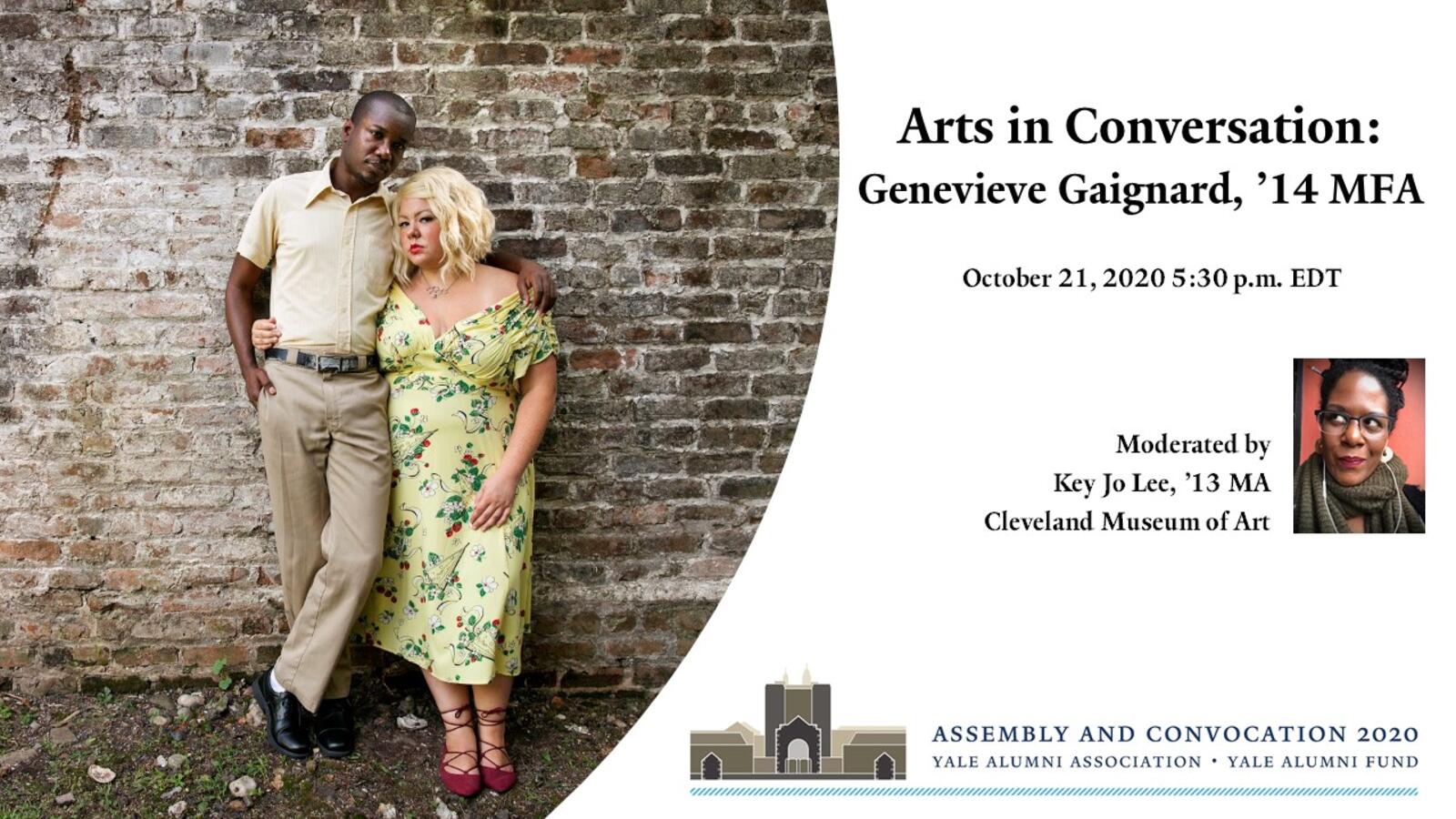The virtual 2020 Yale Alumni Association Assembly and Yale Alumni Fund Convocation continues Wednesday evening, when artist Genevieve Gaignard '14 MFA will talk with scholar and arts educator Key Jo Lee '13 MA, assistant director of academic affairs at the Cleveland Museum of Art, about her work, her time at Yale, and the ways that the current events of 2020 have impacted both challenges and opportunities for the creative sector.
But first, the two alumnae discussed with us what it means to pursue a career in the humanities at a time of global change, how the pandemic has affected their work, and their advice to current students. Here are excerpts from that conversation.
YAA: This year’s YAA Assembly and Yale Alumni Fund Convocation is focused on the role of humanities in a liberal arts education and during times of challenge. How do you see that role?
Key Jo Lee: I see the role of the humanities as essential in its capacity to open up pathways for a renewed investment in critical thinking at a moment when national anti-intellectualism, anti-Blackness, misogyny, homophobia, and xenophobia feel particularly acute. But I also see this moment for the humanities to contend with and attend to its blind spots, including its continued elitism, risk-averse bureaucracy, and dedication to American exceptionalism so that it can better model the broadly inclusive standards to which it aspires.
How has the pandemic affected and impacted your work, both in terms of the day to day of what you do and how you do it, and also in a larger scope of your art and its presentation to the public?

Genevieve Gaignard: I can’t really say the pandemic has affected my art practice. As long as I have my materials, I can work in a bit of a bubble. I don't necessarily need to leave my house to create my art. I use my work as a tool to spark meaningful dialogue around the issues of race and class in our country. I’m most interested in making work that starts to unpack our deep level of unrest due to the blatant systemic racism that plagues America. Over the past six months it’s been hard not to stay glued to TV and social media. As a millennial, it’s second nature to stay connected through the use of technology, and I have been using that as a platform to share my work for a while. Whether the work premieres in person at a gallery, or online in a virtual gallery, the most important thing is that the work goes out into the world and we continue to have these conversations.
Key Jo Lee: I’d say that both my scholarly work and my work as an educator in museums has insisted upon the importance of the face-to-face encounter with works of art. Prior to the stay-at-home orders, my work with university students, faculty, and the general public at The Cleveland Museum of Art took place largely in the galleries. However, with the necessary restrictions on gatherings due to the pandemic, I’ve had an opportunity to adapt my pedagogical approach toward a virtual experience. What is lost is my ability to look at a group and see who might have something to say but needs a bit of encouragement, or someone who is confused and needs additional information because the audience’s voice is contained in a faceless chat. But what has been gained is an ability to expose audiences to collection objects that aren’t currently, or perhaps were never, on view. And while I look forward to a time when we can safely return to the galleries in groups, the virtual space has had also allowed me to increase the audience for programs that would have been limited to far fewer participants, as well as our ability to disseminate the programs via recordings.
I am incredibly lucky that in the face of staff reductions and tightening budgets I have retained my position and that my work can be done from home. But the ways that areas in which I see museums shrinking the fastest, namely education departments, has substantially impacted my approach to internships and fellowships. I don’t have conclusions at this moment, only questions about the future of museum work and how to best prepare students to become the change agents we need. In some ways this is the perfect moment for them to be present, as seismic shifts occur, but only if we create the circumstances for them to be heard rather than groomed.
How did your experiences as a student at Yale shape your professional career?

Genevieve Gaignard: Yale has definitely opened professional doors for me, but you still have to do the hard work once you graduate. In my experience, art collectors take notice of the fact that I invested in my future, and there’s obviously a level of prestige that comes with an MFA from Yale. The commitment to such a rigorous program helped prepare me for future obstacles and played a huge part in where I’m at today.
What advice would you give to students currently studying subjects in the arts and humanities fields, particularly as it relates to life after Yale?
Key Jo Lee: What I say to my students is this: As you are preparing to reshape institutions, you must always be aware of how they are constantly hoping to reshape you.
Genevieve Gaignard: I would say, know that your time at Yale will come with a lot of critical feedback. Don't let it break you down. Filter that information and if something feels off, follow your instincts and push yourself to get closer to articulating what it is that you want to convey. When you aren’t front and center, remember to take note of the feedback others are receiving. Often, there are nuggets of information that can be helpful to absorb in your own practice.
Know that the work you make in school isn’t necessarily what your work is going to look like once you're out in the world. If you’re willing, it should be constantly evolving. As you fine tune your voice, remember to stay in your creative lane so you can better reflect a more cohesive perspective. Avoid making work in a vacuum. Personally, I strive to make work that stems from my own story, while also creating something that connects to a larger audience. I think when you open up those channels of communication, that’s when the work can create real change.





